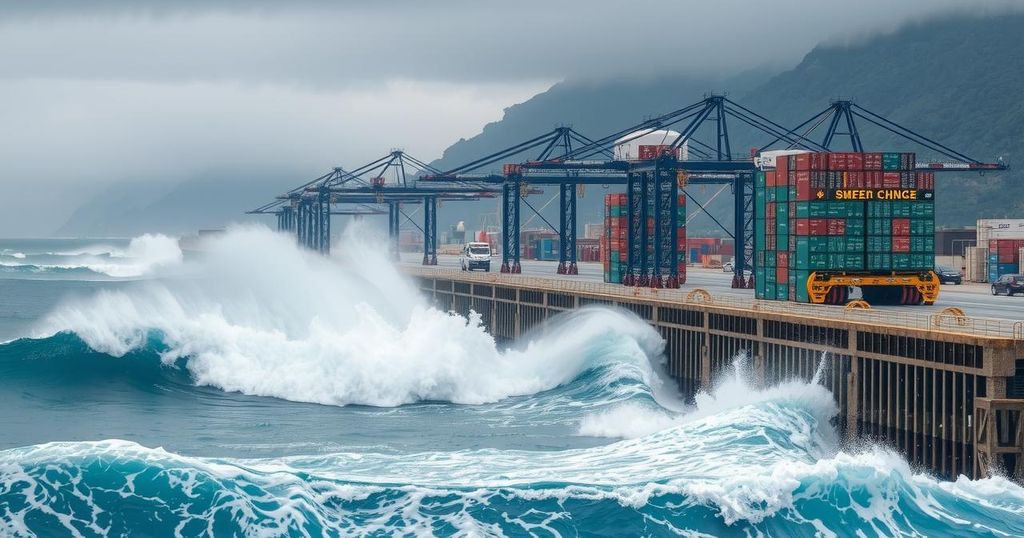Ecuador and Peru face severe wave conditions resulting in two deaths and numerous port closures. Officials attribute the phenomenon to climate change, with predictions of continued rough seas for the upcoming week. Rescue operations are ongoing, particularly for stranded fishermen, and significant economic impacts are being reported in affected areas.
Severe waves reaching heights of 13 feet have severely impacted the coastlines of Ecuador and Peru, resulting in two fatalities, as reported by authorities on Sunday. Jorge Carillo, Ecuador’s risk management secretary, described the situation as an “extreme event,” and indicated that such occurrences might be anticipated again in the future. He confirmed the deaths occurred in the southwestern region of Manta, Ecuador.
In Peru, nearly all ports have been shut down due to relentless wave activity. Enrique Varea, the head of Peru’s naval Oceanographic Department, warned that these large waves are likely to persist in the upcoming days, although a gradual calm is anticipated starting Monday, with conditions expected to normalize by early January. Climate change factors were identified as contributing to the occurrence of these anomalous waves, as stated by Larry Linch, head of Civil Defense in Callao, Peru.
Local media have broadcast images of submerged jetties and public areas, prompting residents to seek higher ground. The Peruvian navy attributed the wave activity to winds coming in from the US coast. In response to the perilous conditions, numerous beaches along Peru’s central and northern regions have been closed for safety reasons. Fishermen have reported significant losses, with some vessels damaged beyond repair; a fisherman lamented the loss of around 100 boats amidst these conditions.
Rescue operations were conducted as thirty-one fishermen stranded by the swelling seas were safely brought back to shore. However, approximately 180 fishermen still remain at sea, facing dire circumstances. Similar wave phenomena have been witnessed off the coast of Chile in Vina del Mar, leading to corresponding alerts from officials. Various closures of beaches and prohibition of both tourist and fishing vessels from entering the water have been enforced in Callao, which is adjacent to Lima, Peru’s capital. La Cruz district’s mayor, Roberto Carrillo Zavala, highlighted the adverse effects these waves have inflicted, particularly on fishermen’s livelihoods, urging for timely assistance from governmental authorities.
The unprecedented wave activity impacting the coasts of Ecuador and Peru stems from a combination of natural climatic conditions exacerbated by climate change. This ongoing phenomenon has intensified, prompting officials to close maritime ports and prioritize safety measures for residents and fishermen. The risks associated with these extreme weather patterns have been largely influenced by environmental factors, making this an urgent issue for coastal communities in both countries.
In summary, Ecuador and Peru are grappling with the aftermath of devastating waves, resulting in fatalities and significant disruption to local economies, particularly among the fishing community. Officials are alerting residents about the potential for future occurrences of similar extreme weather events. The rapid response from rescue units and the declaration of port closures reflect the seriousness of the situation, and there is a pressing need for governmental support to mitigate further losses.
Original Source: www.elpasoinc.com






